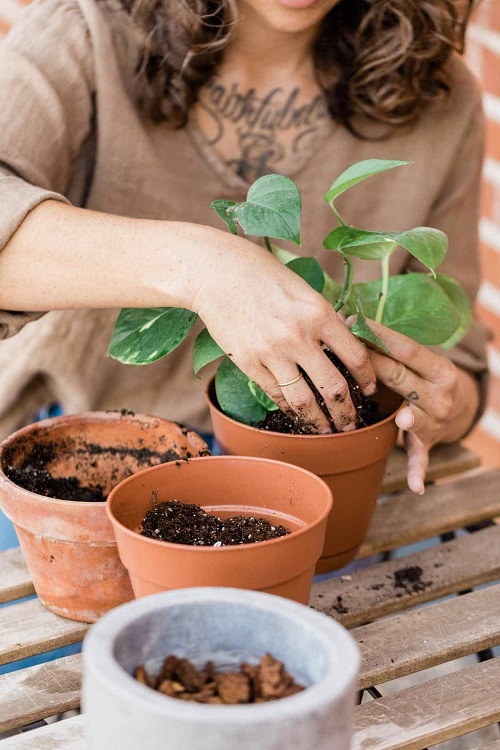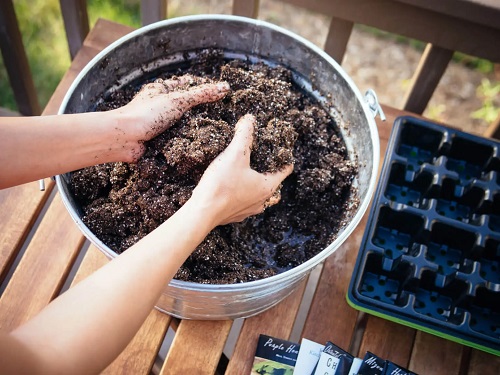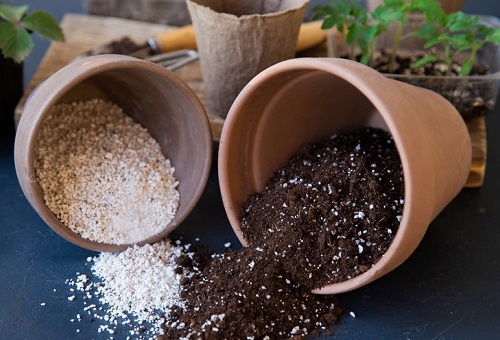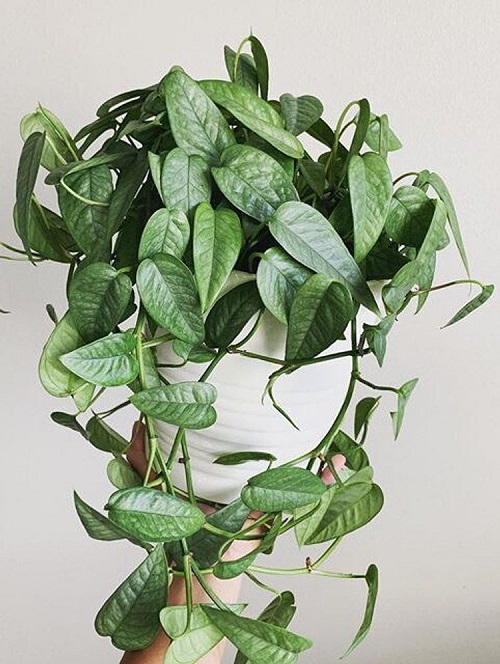For ultimate growth, development, and flowers do not miss these Homemade Potting Mixes for Indoor Plants that can be of great help!

Indoor plants enrich our lives, purify the air, and add aesthetic appeal to our living spaces. However, the store-bought potting mixes often come with a hefty price tag and might not suit the specific needs of every plant species. Tailoring your own potting mix at home offers unparalleled control over the soil composition, enabling optimized growth conditions for various types of indoor plants. Here’s an in-depth look at 10 Homemade Potting Mixes for Indoor Plants the the ones they’re best suited for.
Benefits of Homemade Potting Mixes for Indoor Plants
1. Cost-Effectiveness
Creating your own potting mix allows you to save money, especially if you purchase the raw materials in bulk.
2. Customization
You can tailor the mix to the specific requirements of your plants, improving their growth and vitality.
How to Make Your Own Potting Soil | Potting Mix Recipes For Everything
3. Quality Control
By choosing each ingredient, you can ensure the mix is free from pests and diseases and has the exact nutrients your plants need.
4. Eco-Friendly
Homemade potting mix often uses sustainable and natural ingredients, reducing the environmental impact.
5. No Additives
Commercial mixes often include chemical wetting agents or fertilizers, which you can avoid in a homemade mix.
Essential Components of Homemade Potting Mixes for Indoor Plants

1. Organic Matter
- Peat Moss: Excellent for water retention and acidity.
- Coco Coir: A sustainable alternative to peat moss; good for water retention.
2. Drainage and Aeration Agents
- Perlite: Enhances drainage and aeration.
- Pumice: Heavier than perlite and provides excellent drainage.
- Sand: Adds weight and improves drainage, particularly good for cacti and succulents.
3. Nutrients
- Compost: Provides essential nutrients and enhances soil structure.
- Worm Castings: Adds beneficial microbes and nutrients.
- Bone Meal: A slow-release form of phosphorus that encourages root development.
4. pH Adjusters
- Lime: Raises soil pH.
- Sulfur: Lowers soil pH.
Here is How to Change Your Soil pH
5. Optional Additives
- Epsom Salts: Provides magnesium and sulfur.
- Charcoal: Improves drainage and helps control odor.
By understanding the benefits and components of homemade potting mixes, you’ll be well-equipped to create an ideal environment for your indoor plants to thrive.
10 Best Homemade Potting Mixes for Indoor Plants
1. General-Purpose Mix
A basic, cost-effective homemade potting mix suitable for common houseplants like pothos and snake plants can be made using the following ingredients:
- 3 parts Peat Moss or Coconut Coir
- 2 parts Perlite or Sand
- 1 part Compost or Well-rotted Manure
Instructions
- Mixing: In a large container, combine the peat moss or coconut coir, perlite, and compost. Use gloves to mix the components thoroughly.
- pH Testing: Test the pH level of your mix. The ideal pH for most houseplants is between 6.0 and 7.0. If necessary, adjust the pH by adding dolomite lime to raise it or sulfur to lower it.
2. Succulent Mix
Creating a pocket-friendly potting mix for succulents and cacti is a breeze with just a few basic components. Here’s a simple recipe that works wonders for most varieties:
- 3 parts Coarse Sand or Perlite
- 2 parts Peat Moss or Coconut Coir
- 1 part Pine Bark or Compost
Instructions
- Mixing: Combine the coarse sand, peat moss, and pine bark in a large container. Make sure to wear gloves and mix the ingredients thoroughly.
- pH Testing: Succulents and cacti prefer slightly acidic to neutral soil, with a pH range of 5.5 to 7.0. You can adjust the pH by adding crushed limestone to raise it or elemental sulfur to lower it.
3. Orchid Mix
Orchids require a specialized growing medium that provides excellent drainage and aeration. Here’s a simple and cost-effective homemade potting mix tailored for most common orchids:
- 4 parts Fir Bark or Pine Bark Mini Nuggets
- 2 parts Perlite
- 1 part Charcoal (horticultural grade)
Instructions
- Mixing: Combine the fir bark, perlite, and charcoal in a large container. Wearing gloves, mix all the components thoroughly to ensure an even distribution.
- Moistening: Slightly moisten the mix before potting your orchid. This helps the medium settle around the roots more effectively.
4. African Violet Mix
African Violets require a well-draining, slightly acidic growing medium.
- 2 parts Sphagnum Peat Moss or Coconut Coir
- 1 part Perlite
- 1 part Vermiculite
Instructions
- Mixing: In a large container, combine the sphagnum peat moss, perlite, and vermiculite. Using gloves, mix the components well to ensure even distribution.
- pH Testing: African Violets prefer slightly acidic soil with a pH range of 6.0 to 6.5. Test the pH of your mix and adjust if necessary using lime to raise the pH or sulfur to lower it.
5. Citrus Mix
Citrus plants require well-draining, slightly acidic soil for optimal growth. Below is an economical homemade potting mix that suits the needs of most common citrus plants:
- 3 parts Peat Moss or Coconut Coir
- 2 parts Perlite or Coarse Sand
- 1 part Pine Bark Fines or Composted Manure
Instructions
- Mixing: In a large container, combine the peat moss, perlite, and pine bark fines. Use gloves to thoroughly mix these components.
- pH Testing: Citrus plants prefer slightly acidic to neutral soil, with a pH range of 6.0 to 7.0. If required, adjust the pH by adding dolomite lime to raise it or sulfur to lower it.
- Moistening: Lightly moisten the mix before using it for potting.
Awesome Citrus Peel Uses In Garden
6. Fern Mix
Ferns thrive in a moisture-retentive, well-draining medium. Here’s a simple and economical homemade potting mix recipe suitable for most fern varieties:
- 3 parts Peat Moss or Coconut Coir
- 2 parts Perlite or Pumice
- 1 part Compost or Leaf Mold
Instructions
- Mixing: In a large mixing container, combine peat moss, perlite, and compost. Wearing gloves, thoroughly mix these components together.
- pH Testing: Ferns generally prefer slightly acidic to neutral soil, with a pH range of 5.5 to 6.5. If necessary, adjust the pH by adding dolomite lime to increase it or sulfur to decrease it.
- Moistening: Before potting, moisten the mix lightly to make it easier to work with.
7. Palm Mix
Palms need a well-draining but moisture-retentive potting medium. Here’s an easy and economical homemade potting mix for common indoor palm varieties:
- 3 parts Peat Moss or Coconut Coir
- 2 parts Perlite or Coarse Sand
- 1 part Compost or Pine Bark
Instructions
- Mixing: In a large container, blend the peat moss, perlite, and compost together. Use gloves to ensure a thorough mixing of all elements.
- pH Testing: Palms generally thrive in slightly acidic to slightly alkaline soil, with a pH range of 6.0 to 7.0. If necessary, adjust the pH by adding dolomite lime to raise it or sulfur to lower it.
- Moistening: Before using the mix for potting, lightly moisten it to facilitate a better planting process.
8. Aroid Mix
Both Philodendrons and Monstera plants require a well-draining but moisture-retentive potting mix. Here’s an economical homemade recipe suitable for these popular houseplants:
- 3 parts Peat Moss or Coconut Coir
- 2 parts Perlite or Pumice
- 1 part Compost or Well-rotted Manure
Instructions
- Mixing: Combine the peat moss, perlite, and compost in a large container. Wearing gloves, mix these components together thoroughly.
- pH Testing: Philodendrons and Monstera prefer slightly acidic soil with a pH range of 5.5 to 6.5. Test the pH of your mix and adjust if needed, using lime to raise it or sulfur to lower it.
9. Herb Mix
Indoor herbs such as basil, parsley, and thyme require a well-draining potting mix for optimal growth.
- 3 parts Peat Moss or Coconut Coir
- 2 parts Perlite or Sand
- 1 part Compost or Well-Rotted Manure
Instructions
- Mixing: In a large container, blend together the peat moss, perlite, and compost. Wearing gloves, make sure the components are mixed well.
- pH Testing: Most herbs prefer a neutral to slightly acidic soil with a pH range of 6.0 to 7.0. You can adjust the pH using lime to raise it or sulfur to lower it if needed.
- Moistening: Pre-moisten the mix slightly before potting your herbs, making it easier to work with and helping the roots establish.
10. Ficus Mix
Ficus varieties such as Ficus lyrata (Fiddle-leaf Fig) and Ficus elastica (Rubber Plant) prefer a well-draining but slightly moisture-retentive soil.
- 3 parts Peat Moss or Coconut Coir
- 2 parts Perlite or Pumice
- 1 part Pine Bark or Compost
Instructions
- Mixing: In a large container, combine the peat moss, perlite, and pine bark. Using gloves, mix these components until they are well-distributed.
- pH Testing: Most Ficus varieties prefer slightly acidic to neutral soil, with a pH range of 6.0 to 7.0. If required, adjust the pH by adding lime to raise it or sulfur to lower it.
Note: To minimize the risk of pathogens, consider sterilizing the mix. Bake it in the oven at 200°F for approximately 30 minutes. Keep any remaining mix in a sealed container to maintain its freshness for future use.
Conclusion
Homemade potting mixes provide a cost-effective, high-quality, and customized solution for your indoor plants. These recipes offer a range of options for various types of houseplants, ensuring that your green companions thrive in optimal conditions.
So go ahead, roll up your sleeves, and start creating the perfect home for your indoor plants.




